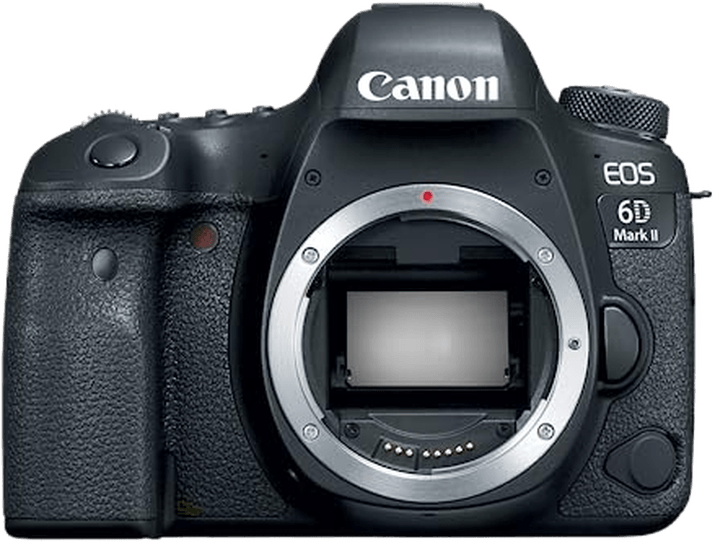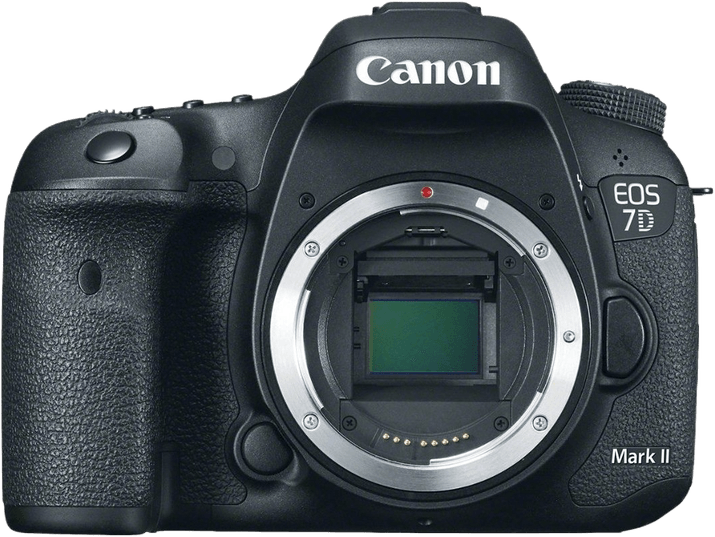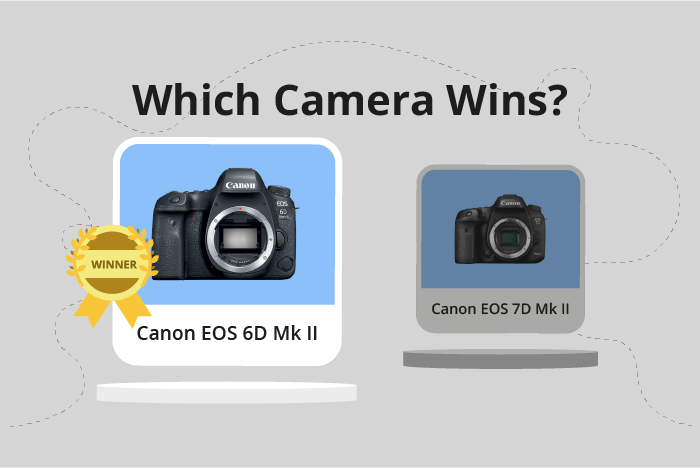Canon EOS 6D Mark II vs EOS 7D Mark II Comparison
Canon EOS 6D Mark II

Canon EOS 7D Mark II

The Canon EOS 6D Mark II outperforms the Canon EOS 7D Mark II with a score of 71/100 compared to 60/100. Both cameras are DSLRs, released in 2017 and 2014 respectively, with the 6D Mark II priced at $2000 and the 7D Mark II at $1800. They share similar dimensions, with the 6D Mark II measuring 144 x 111 x 75mm and the 7D Mark II at 149 x 112 x 78mm.
The 6D Mark II has the advantage of being significantly lighter, weighing only 453g, while the 7D Mark II weighs 910g. This makes the 6D Mark II more portable and easier to handle during long shoots. On the other hand, the 7D Mark II’s lower price point may appeal to budget-conscious buyers.
Considering the higher score, lighter weight, and more recent release, the Canon EOS 6D Mark II is the superior choice between these two cameras. However, the Canon EOS 7D Mark II remains a viable option for those seeking a more affordable DSLR.
Canon EOS 6D Mark II vs EOS 7D Mark II Overview and Optics
The Canon EOS 6D Mark II outperforms the Canon EOS 7D Mark II in optics with a score of 69/100 compared to the latter’s 61/100. Both cameras share several specifications, including a CMOS sensor, no image stabilization, and compatibility with Canon EF lenses. Despite these similarities, there are notable differences in the cameras’ optics that contribute to the higher score of the 6D Mark II.
The 6D Mark II has a higher megapixel count at 26.2, compared to the 7D Mark II’s 20.2 megapixels. This difference allows the 6D Mark II to capture more detail and produce higher resolution images. Additionally, the 6D Mark II features a full-frame sensor, which provides better low-light performance and increased dynamic range compared to the 7D Mark II’s APS-C sensor. The full-frame sensor also contributes to the 6D Mark II’s higher DXOMARK score of 85, compared to the 7D Mark II’s score of 70.
On the other hand, the 7D Mark II has a faster shooting speed of 10 frames per second, compared to the 6D Mark II’s 6.5 frames per second. This advantage makes the 7D Mark II more suitable for capturing fast-moving subjects, such as sports and wildlife photography. However, this benefit does not outweigh the superior image quality provided by the 6D Mark II’s higher megapixel count and full-frame sensor.
In comparing the optics of the Canon EOS 6D Mark II and the Canon EOS 7D Mark II, the 6D Mark II emerges as the better camera due to its higher megapixel count, full-frame sensor, and better overall image quality. While the 7D Mark II offers a faster shooting speed, it falls short in the crucial aspects of image quality and low-light performance that the 6D Mark II excels in.
Canon EOS 6D Mark II vs EOS 7D Mark II Video Performance
The Canon EOS 6D Mark II wins in terms of video capabilities with a score of 57/100, while the Canon EOS 7D Mark II follows closely with a score of 56/100. Both cameras share a maximum video resolution of Full HD and video dimensions of 1920 x 1080. However, the cameras differ in their maximum video frame rates and time-lapse functionality.
The 6D Mark II has an edge over the 7D Mark II due to its built-in time-lapse functionality. This feature allows users to create stunning time-lapse videos without the need for additional software or equipment. This advantage makes the 6D Mark II a more versatile option for videographers looking to capture dynamic scenes and landscapes.
On the other hand, the 7D Mark II offers a higher maximum video frame rate of 60fps, compared to the 6D Mark II’s 30fps. This higher frame rate enables smoother and more detailed slow-motion videos, which can be crucial for capturing fast-paced action and sports events. Despite lacking built-in time-lapse functionality, the 7D Mark II still excels in capturing high-quality slow-motion footage.
In comparing the video capabilities of the Canon EOS 6D Mark II and the Canon EOS 7D Mark II, the 6D Mark II comes out on top due to its built-in time-lapse feature. However, the 7D Mark II should not be overlooked for its superior slow-motion capabilities. Ultimately, the choice between these two cameras depends on the specific video needs and preferences of the user.
Canon EOS 6D Mark II vs EOS 7D Mark II Features and Benefits
The Canon EOS 6D Mark II is the winner in the features comparison with a score of 83/100, while the Canon EOS 7D Mark II scores 57/100. Both cameras share certain specifications such as a 3-inch screen size, 1040000-dot screen resolution, GPS, and WIFI capabilities.
The 6D Mark II outshines the 7D Mark II in several aspects. It has a touchscreen which allows for easier navigation through menus and faster adjustments. Furthermore, the 6D Mark II features a flip screen, which is useful for capturing images and videos from various angles and positions. The addition of Bluetooth connectivity in the 6D Mark II also enables seamless connection with other devices and remote control options.
On the other hand, the 7D Mark II does not offer any significant advantages over the 6D Mark II in terms of features. It lacks a touchscreen, flip screen, and Bluetooth connectivity, which makes it less versatile and user-friendly compared to the 6D Mark II.
Comparing the two cameras, the Canon EOS 6D Mark II is evidently better in terms of features. Its touchscreen, flip screen, and Bluetooth connectivity provide users with a more convenient and flexible experience. The 7D Mark II, although offering similar basic specifications, does not stand out in this comparison and lacks the additional features that make the 6D Mark II a more appealing choice for photographers and videographers alike.
Canon EOS 6D Mark II vs EOS 7D Mark II Storage and Battery
The Canon EOS 7D Mark II outperforms the Canon EOS 6D Mark II in storage and battery with a score of 65/100 compared to 45/100. Both cameras share certain specifications, such as using the LP-E6N battery type and not offering USB charging.
The 7D Mark II excels with its dual memory card slots, accepting both SD/SDHC/SDXC and Compact Flash cards, while the 6D Mark II has a single SD/SDHC/SDXC slot. This additional slot provides greater flexibility and storage capacity for the 7D Mark II. However, the 6D Mark II has a longer battery life, delivering 1200 shots compared to the 7D Mark II’s 670 shots. This advantage makes the 6D Mark II more suitable for extended shooting sessions without needing to replace the battery.
Taking these factors into account, the Canon EOS 7D Mark II’s superior storage capabilities make it the better choice for photographers who require more versatility and capacity. Meanwhile, the Canon EOS 6D Mark II’s longer battery life may appeal to those who prioritize extended shooting time.
Canon EOS 6D Mark II vs EOS 7D Mark II – Our Verdict
Are you still undecided about which camera is right for you? Have a look at these popular comparisons that feature the Canon EOS 6D Mark II or the Canon EOS 7D Mark II:

